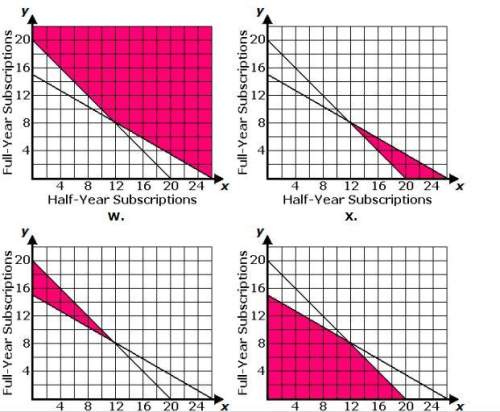
Mathematics, 07.04.2020 21:37 georgesarkes12
Now suppose we wish to conduct the same hypothesis test again if the true proportion is 0.35. In other words, we happen to know the true parameter value is 0.35, something that is typically not known. How does the test statistic change with this new information? What is the resulting p-value?
Hint: Try writing what the null hypothesis and test statistic would be given this new information. What would change, if anything?
Select one:
a. The test statistic becomes 1.61 with a p-value of 0.537.
b. The test statistic becomes 1.66 with a p-value of 0.095.
c. The test statistic becomes -3.23 with a p-value of 0.9995.
d. The test statistic does not change from its original value of 5.47, and the associated p-value does not change.
e. None of the other answers are correct.

Answers: 3


Another question on Mathematics


Mathematics, 21.06.2019 20:30
The interior angles formed by the side of a hexagon have measures of them up to 720° what is the measure of angle a
Answers: 2

Mathematics, 22.06.2019 00:40
Point b lies between points a and c on . let x represent the length of segment ab in inches. use the segment to complete the statements. the value of x is . the length of in inches is . the length of in inches is .
Answers: 3

Mathematics, 22.06.2019 01:50
Algebraically prove that a clockwise and counterclockwise rotation of 180° about the origin for triangle abc are equivalent rotations.
Answers: 2
You know the right answer?
Now suppose we wish to conduct the same hypothesis test again if the true proportion is 0.35. In oth...
Questions


Mathematics, 12.07.2021 18:50

Geography, 12.07.2021 18:50




Mathematics, 12.07.2021 18:50


Mathematics, 12.07.2021 18:50

Chemistry, 12.07.2021 18:50

English, 12.07.2021 18:50









Mathematics, 12.07.2021 18:50

 ≈N(0;1)
≈N(0;1)



